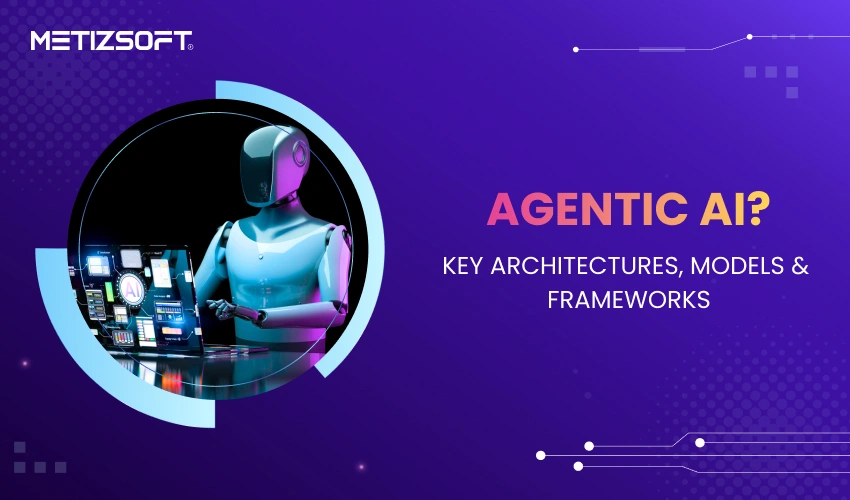For more than two decades, the Customer Relationship Management (CRM) system has been the centrepiece of sales operations. It became the digital heart of revenue teams, a structured vault of leads, activities, and opportunities. It promised clarity, control, and coordination. But as sales cycles grew more complex and digital ecosystems exploded, CRMs started showing their limits.
They were built to record. Not to reason.
Even today, most CRMs still rely on human input to function. Every deal, note, and follow-up has to be logged manually. Automations help, but they remain static, rule-based sequences triggered by predefined actions. The result is a paradox: sales teams spend more time maintaining the system designed to save them time.
That’s where the next evolution begins. A new paradigm is emerging, one that shifts CRMs from passive repositories into active, thinking systems. It’s called Agentic Intelligence Architecture (AIA), and it’s redefining how sales work gets done.
From Systems of Record to Systems of Action
Traditional CRMs were built for documentation and visibility. They show what’s happening, but rarely do anything about it. They rely on humans to initiate every task, send every email, and follow up on every lead.
AIA, in contrast, is built for momentum. It’s not a system you feed, it’s a system that feeds you back.
Agentic architectures go beyond automation. They don’t just execute rules; they make informed decisions. They identify leads, enrich them, draft outreach, respond to replies, schedule meetings, and update records, all without needing explicit instructions. In other words, the system doesn’t just log the workflow; it drives it forward.
It’s a shift from visibility to velocity. From dashboards to doers.
The Core Shift: From Automation to Autonomy
Automation helped us scale repetitive work, but it never eliminated it. It still required setup, triggers, and oversight. Each automation had to be told when and how to act. Agentic systems, on the other hand, remove that dependency.
They’re not programmed to follow, they’re designed to pursue.
An autonomous AI doesn’t wait for a rep to assign tasks. It understands the end goal, say, increasing qualified meetings or reactivating dormant leads, and charts its own course toward it. It connects the dots between intent and action.
That’s the defining difference between CRM and AIA.
A CRM waits for input; an AIA initiates outcomes.
What an Agentic Sales Architecture Looks Like
Imagine logging into your workspace and finding that your AI teammate has already done what used to take your entire morning:
- It discovered new prospects that fit your ICP.
- It enriched their profiles with verified contact data.
- It drafted and sent personalized outreach messages across email and LinkedIn.
- It handled the responses, thanking uninterested leads, forwarding warm ones, and scheduling calls directly onto your calendar.
- It updated your pipeline and CRM automatically, attaching every interaction for full visibility.
That’s not hypothetical, that’s where sales technology is heading right now.
Platforms like Jeeva represent this shift from reactive software to proactive intelligence. Instead of functioning as a tool you operate, it behaves like a teammate that understands the context, adapts on the fly, and executes in real time. It transforms work from something you have to manage into something that manages itself.
How Agentic AI Works Under the Hood
At its core, an Agentic Intelligence Architecture integrates three key layers:
- The Cognitive Layer – where the AI understands intent, context, and objectives. This is what lets it act beyond static instructions.
- The Action Layer – where intelligent agents execute multi-step workflows across different systems, from prospecting and enrichment to outreach and follow-ups.
- The Learning Layer – where feedback loops continuously refine strategies based on outcomes, ensuring the system improves with every cycle.
This triad gives AIA its defining capability: continuity of intelligence. Unlike traditional automations that stop once a rule runs, agentic systems persist, they observe, adapt, and keep executing until the desired outcome is achieved.
It’s not about doing a task faster; it’s about completing a goal smarter.
As Anubhav Sharma, Head of Agentic AI at Jeeva, explains:
“Automation was about efficiency. Agentic intelligence is about evolution. It’s the moment when software stops waiting for input and starts working toward intent. It learns the outcome you want, and gets there without being told how.”
That’s the essence of AIA, systems that don’t just process commands but understand purpose.
The Human in the Loop
A common misconception about agentic AI is that it replaces human reps. The truth is the opposite, it liberates them.
Sales professionals aren’t meant to spend hours cleaning data, tracking follow-ups, or updating dashboards. Their value lies in judgment, empathy, and persuasion, the very qualities machines can’t replicate.
Agentic AI handles the busywork, giving humans the time and clarity to do what they do best. In this sense, the technology doesn’t remove people from the loop, it repositions them at the top of it.
In a fully agentic architecture, humans become the strategists and closers, while AI acts as the operations layer, silently executing everything in between. The relationship becomes symbiotic: AI handles precision; humans deliver persuasion.
Why AIA Is the Logical Next Step
The rise of AIA isn’t just about technology. It’s about necessity.
As sales cycles grow more fragmented across multiple channels and touchpoints, teams are drowning in context-switching. Managing a CRM, outreach tool, enrichment platform, and scheduling app simultaneously has made the modern sales stack both powerful and exhausting.
Agentic Intelligence unifies this chaos. It doesn’t replace individual tools, it orchestrates them.
Instead of toggling between tabs, teams can define outcomes (“Book 15 qualified meetings this week”) and let the AI handle everything required to reach that number.
That’s the promise of AIA, not just efficiency, but self-sustaining execution.
From CRM to AIA: A Defining Moment in Sales Tech
The evolution from CRM to AIA mirrors every major leap in technology, from manual to mechanical, from mechanical to automated, and now from automated to autonomous.
CRMs helped us organize.
Automations helped us optimize.
Agentic AI helps us actualize.
We’re entering a phase where systems don’t just tell us what’s happening, they make things happen. Where AI isn’t just assisting humans but working alongside them. Where the architecture of sales shifts from static databases to intelligent, adaptive ecosystems.
In the near future, companies won’t ask, “Which CRM are you using?”
They’ll ask, “Which agentic architecture runs your revenue engine?”
Because CRMs recorded the past.
AIA creates the future.



































